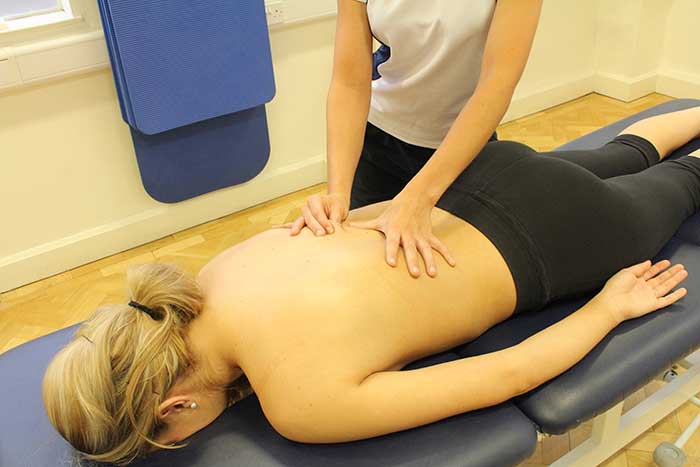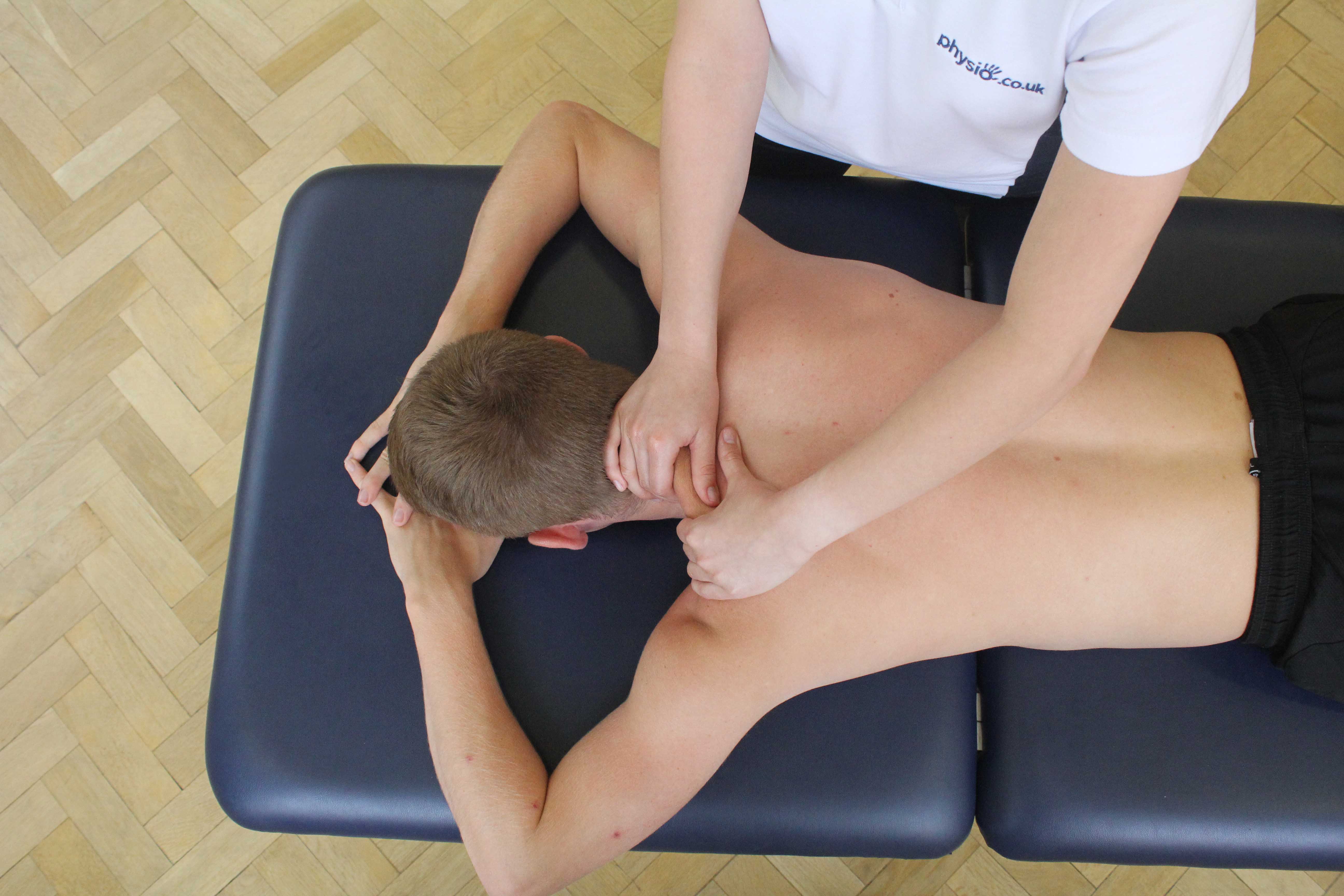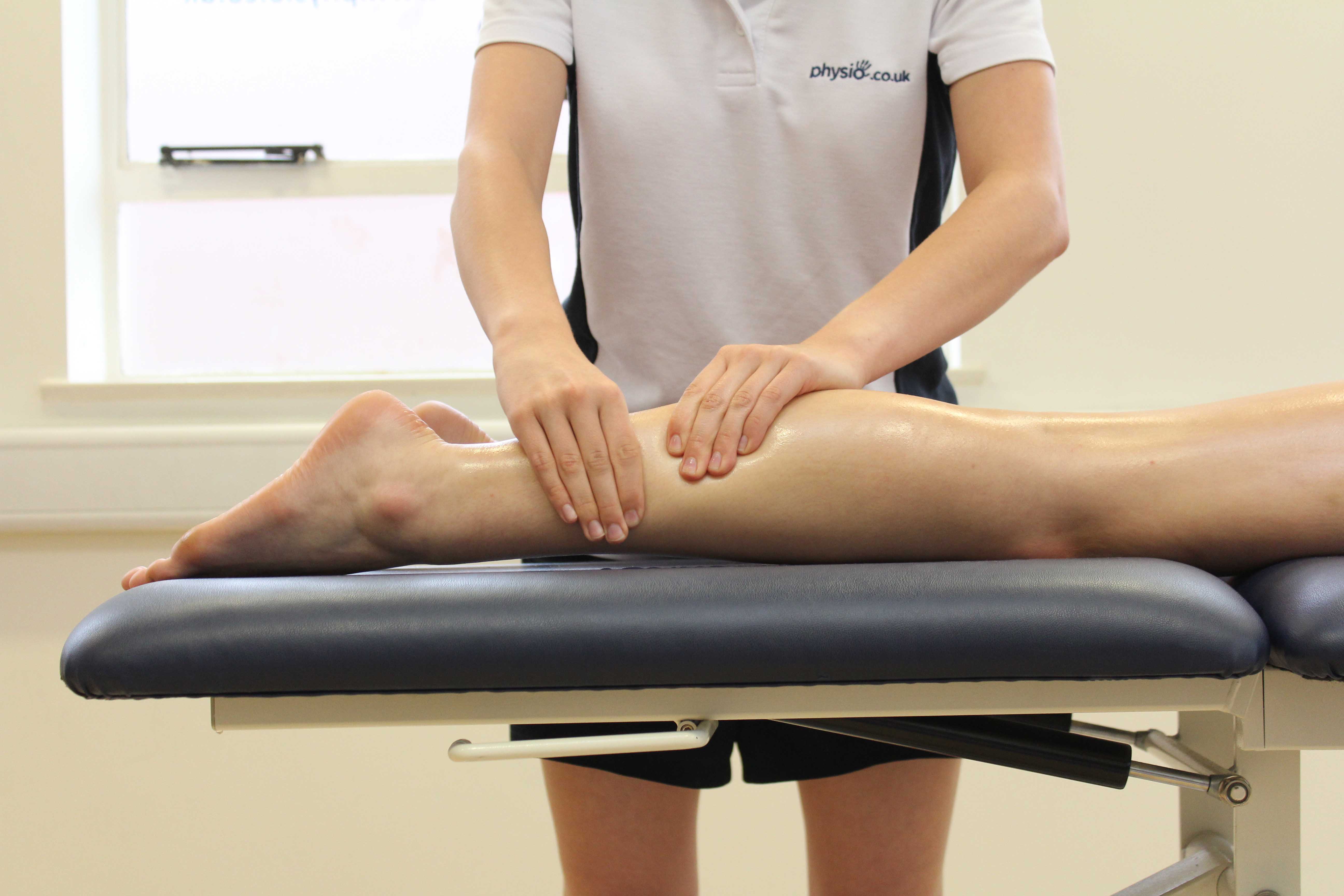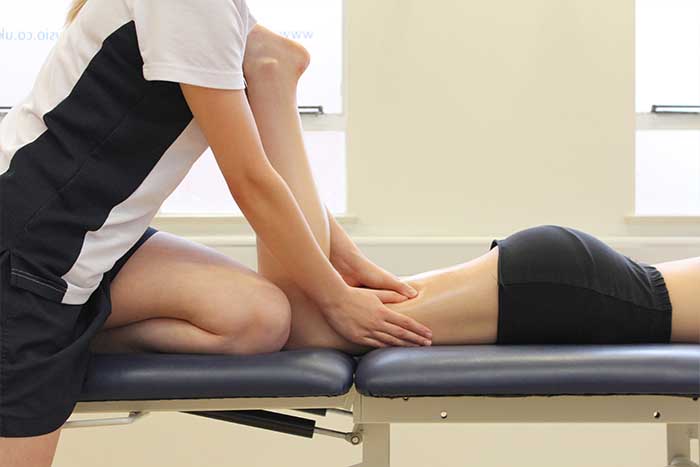Skin rolling can be used to loosen the skin and treat muscular tension. Skin rolling is also used to produce a relaxing effect. Skin rolling aims to relieve the skin and connective tissue of restrictions. Skin rolling can help reduce pain, improve flexibility and relieve tightness. Massage therapists working at Physio.co.uk perform skin rolling to treat many muscular conditions.
What is skin rolling?
Skin rolling is used for releasing and clearing obstructions within the soft tissues. The skin rolling technique releases muscular knots and adhesions so that skin can flow efficiently over the body. Skin rolling is performed using the thumb and fingers to pull skin away from the tissue. It is then rolled forwards in a constant motion to help separate it from being stuck from muscle. Skin rolling can be used around areas of scar tissues to help break it down. Skin rolling can also produce a therapeutic effect and decrease stress levels.

When is skin rolling used?
Skin Rolling can help in many circumstances. These circumstances include:
 Above: Rolling massage technique on trapezius muscle
Above: Rolling massage technique on trapezius muscleSkin rolling encourages relaxation. Skin rolling can be performed lightly across the skin and muscle and help relax the body. Skin rolling increases the temperature of soft tissues that also produces a calming effect. The pressure of skin rolling against the skin stimulates the parasympathetic nervous system in the body. The parasympathetic nervous system is part of the central nervous system that regulates the body back to a relaxed and calm state.
Skin rolling can help treat tissues after injuries have occurred. Skin rolling can aim to help restore tissue movement that has been affected due to injury. After injury adhesions or scar tissue are formed within soft tissues, stiffness can be a common symptom around an area when recovering from injury. Stiffness in the soft tissues can lead to restricted movement. Restrictive movement causes pain to specific areas. Skin rolling breaks up muscular adhesions and scar tissue allowing an increase in flexibility.
Skin rolling is commonly used to treat scarring. Scars can form due to injury or post surgery. Scarring can harden and become restrictive. Scars can be loosened by skin rolling. Skin rolling increases the temperature in the soft tissues and allow muscle fibres to relax. Skin rolling uses a push and pull technique to mobilise the tissue and relieve stiffness. Skin rolling can also be effective to treat fascia tissue. Fascia can inflame due to stress, acid build-up or injury. Skin rolling can manipulate fascia tissues and soothe out any obstructions.
What are the physiological effects of skin rolling?
Massage can produce many important physiological effects on the body. The physiological effects of skin rolling include:
 Above: Rolling massage technique on gastocnemius and soleus muscles
Above: Rolling massage technique on gastocnemius and soleus musclesSkin rolling increases temperature of soft tissues. The skin rolling massage technique increases temperature by applying friction against the skin. Friction stimulates the widening and number of blood cells, increasing the amount of blood circulation. Increased temperature helps muscle tissue loosen and relax.
Skin rolling also increases tissue elasticity. Tissue elasticity is increased by the direction of movement which is applied during the skin rolling technique. Skin rolling stretches and loosens tissue so that flexibility is increased. Skin rolling can be performed deeper to treat muscle tissue and help increase movement around a joint.
Skin rolling breaks down and realigns collagen fibres. Adhesions are formed in soft tissues and can restrict movement and increase pain. Skin rolling can be applied across adhesions to break down collagen fibres that have been laid down. Skin rolling breaks down adhesions and helps to realign collagen fibres into the direction of normal muscle fibres.

What are the benefits of skin rolling?
Skin rolling has many benefits. The benefits of skin rolling include:
Skin rolling is beneficial to help increase flexibility of the tissues. Skin rolling increases flexibility by increasing temperature, increasing tissue elasticity and breaking up scar tissue and adhesions. Skin rolling increases temperature by creating friction against the skin. Increased temperature will allow tissue fibres to loosen and relax. Skin rolling increases tissue elasticity by stretching and rolling tissues. Pressure applied to the tissues helps increase flexibility and movement.
Skin rolling can also be a benefit to help break up scar tissue and adhesions. Skin rolling applies pressure across the direction of muscle fibres so that collagen can be broke down and realigned. When muscle fibres are realigned, the tissue flows easily and flexibility is increased.
Skin rolling increases healing within soft tissues. By performing skin rolling, it helps increase healing by increasing blood circulation to a specific area. The technique of skin rolling increases capillarisation and vasodilation. Capillarisation and vasodilation increase the number and size of blood cells. The increased size and number allows more oxygen and nutrients to be transferred into the tissues. Oxygen and nutrients are vital to help repair any damaged cells and increase healing.
Common body parts treated by skin rolling
There are many common body parts that can be treated with skin rolling. Common body parts treated by skin rolling are:
Skin rolling can also be performed on other areas of the body and be effective to treat restricted tissue and pain.
Summary
Skin rolling treats muscle tension, scarring and provides a relaxation effect. Skin rolling is performed across skin and fascia tissue to help relieve restrictions. Skin rolling has many physiological effects on the body including increased temperature, increased tissue elasticity and breaking down and realigning of collagen fibres. Massage therapists working at Physio.co.uk apply skin rolling to treat many muscular problems.
How can I arrange a skin rolling massage treatment?
The easiest way to arrange a skin rolling massage treatment at Physio.co.uk is to email us at, office@physio.co.uk or call us on 0800 033 7800.
Alternatively if you have any questions please feel free to contact us.
We offer a 7 day service and provide home and clinic appointments.

 0330 088 7800
0330 088 7800



































